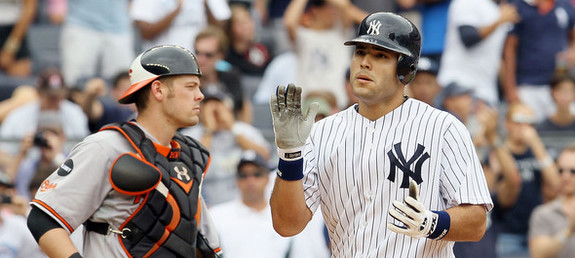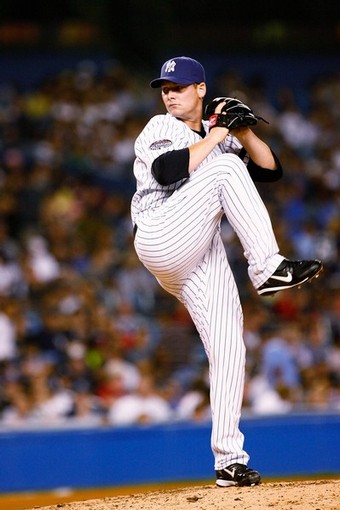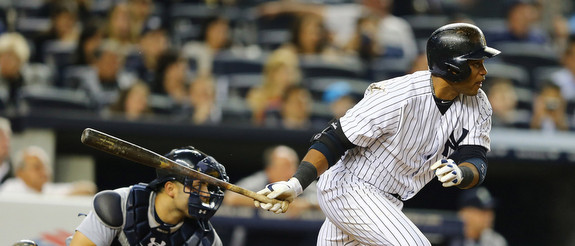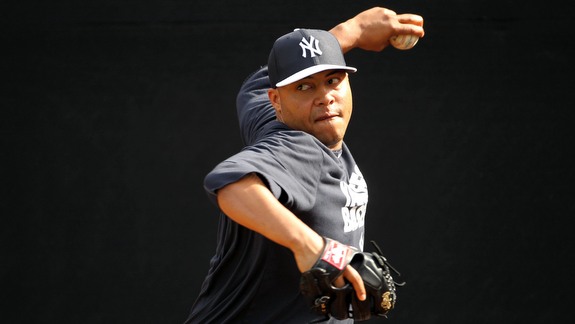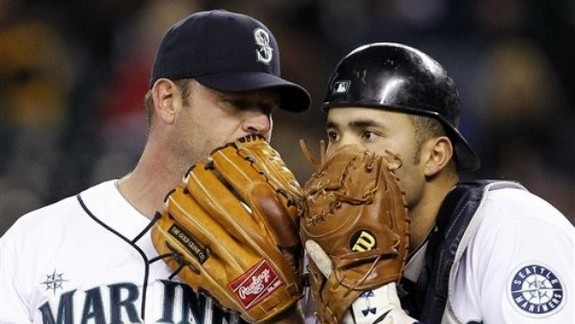
It’s July 2, 2016. Guess what happened ten years ago today? The Yankees signed a highly-touted catching prospect Jesus Montero out of Guaraca, Venezuela. Montero, the former future cleanup hitter and present what-could-have-been, pretty much hit his way up to the top of the system and excited the fans with a solid ML showing late in the 2011 season. But as you know, he was dealt to Seattle in January 2012 in a trade that brought Michael Pineda and Vicente Campos to the Yanks.
Montero had been hyped as the very top commodity for the 2006 IFA signing class. The excitement stemmed from his hitting prowess. Here’s PinstripePlus.com’s assessment of his bat before the Yankees signed him”
The right-handed power hitting catcher drew immediate attention from Yankee officials in Spring Training in a two-day tryout where he participated in intrasquad games this past March … He not only held his own against much older competition, but he drew glazed and impressed looks from all the Yankees’ prospects that day.
“He’s ‘the’ top International free agent this year,” (then international scouting director) Carlos Rios told PinstripesPlus.com on March 17th. “He can really hit and he plays a prime position.”
So yes, it wasn’t a secret that Montero could hit. I was never involved in scouting so I have no idea how they evaluate players beyond their stats but it seems like just about everyone that looked at him loved the intangibles.
The major knock on Montero — which followed him for a long, long while — was that scouts didn’t like his chances of him remaining at catcher. Here’s a quote from Baseball America:
While his bat and power potential made Montero a hot commodity, his future behind the plate may be in doubt, according to scouts with other clubs. One scout said Montero was already 6-foot-3 and 230 pounds and disparagingly compared his body to that of Henry Blanco; another said he was too stiff and lacked the athleticism to catch at the big league level.
“He has above-average raw power, a lot of power, but where do you put him?” the scout said. “I don’t think he’ll catch. He’s a big-hipped kid and he’s going to get bigger; he may have to end up at first base.”
The BA article also had a nice quote from a scout, who compared Montero to Travis Hafner. We’re not talking about the Hafner that briefly played for the Yanks in 2013. The 2006 version of Travis Hafner terrorized ML pitching by hitting .308/.439/.659 with 42 HR. So yes, it was an extremely attractive comparison that had Yankee fans salivating for future.

The Yankee system at the time was on the upswing. They had an exciting young position player in Low-A named Jose Tabata, and their 2004 first-rounder Phil Hughes was tearing up the low minors en route to Double-A. Another Double-A pitcher named Tyler Clippard was having a solid season in which he tossed a no-no. Guys like Austin Jackson and Brett Gardner were trying to climb out of the low minors.
Around that time, Melky Cabrera (only 21 then) had just come up to majors and made some impact replacing the injured Gary Sheffield. It had been awhile since the Yankees had organizational talents come up to bigs and be regulars, and in 2006, fans were excited about the possibility of building yet another Core Four.
The Yankees signed Montero at dawn of the July 2nd signing day. The reported bonus was $2 million, a record amount at the time. An initial report called it $2.2 million, but Yankees disputed it, saying that it was $2 million. As you may have guessed, Montero took the No. 1 spot on ESPN’s top IFA list in 2006. Following him are plethora of names that you may or may not have heard. Here are a few:
1. Jesus Montero: You know how it went.
2. Engel Beltre: Signed with the Red Sox. Sent to the Rangers in July 2007 trade that brought Eric Gagne to Boston. He had 22-game cup of coffee with the Texas Rangers in 2013 but never made a mark in the bigs. He’s currently playing in Mexican league, hitting .354/.394/.446 for Campeche.
3. Angel Villalona: Signed with the Giants. He was a big kid who was projected to hit for power. After some decent seasons, he was charged for murder in September 2009. Whoa. Villalona was ordered to house arrest for two years and the charges were dropped after he reached a settlement with victim’s family. He came back to U.S. in 2012 to resume pro career and still hasn’t reached to Triple-A yet, let alone majors. At age 25, Villalona is with the Giants’ Double-A affiliate and hitting for a measly .336 OPS in 31 PA. Safe to say this was probably one of the worst big money IFA signings ever.
4. Oscar Tejeda: Another young toolsy guy signed by the Red Sox. And again, another guy who hasn’t made the majors. He bounced around the Boston, Pittsburgh and Washington organizations but never got past Triple-A. There is no record of him playing baseball in 2016.
5. Larry Suarez: The highest pitcher in the list. Signed with the Cubs. Never got to the majors and pitched only one Triple-A game in his seven-year MiLB career. He had a 5.09 ERA in 272.1 career IP.
6. Euclides Viloria: ESPN’s brief report described him as “Sort of like Johan Santana, but with less power.” He signed with the Padres and apparently had only one pro season. He pitched to a 5.63 ERA in 54.1 but struck out 73. It seems he suffered an injury and never pitched in the pros again. Shame.
7. Esmailyn Gonzalez: Signed with the Nationals. This one was a doozy. In 2009, MLB found out Gonzalez was named Carlos Lugo, and he was four years older than listed. The scandal forced Nationals then-GM Jim Bowden to resign. Prior to being busted, Lugo was on a roll, hitting .343 with a .906 OPS in GCL in 2008 when he was supposedly 18-year old Esmailyn Gonzalez. Lugo never got past High-A and he’s been out of professional baseball since 2014.
8. Carlos Triunfel: Signed with the Mariners. Ho-hum, another ML cup of coffee guy. He actually hit decently in the low minors but couldn’t figure out Double-A pitching for awhile. He got to majors in 2012 and had 24 very forgettable PA (.579 OPS). In 87 career ML PA, Triunfel has a .423 OPS. He’s still in MiLB, with the Reds Triple-A affiliate.
None of these guys reached their potential. I assume guys like Montero can make it as a late-bloomer and get a shot at being a ML regular, but the chances of that are pretty slim.
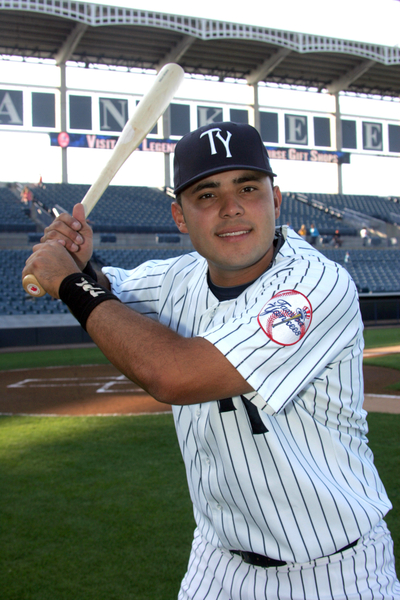
Montero hit consistently throughout the minors. He got up to Triple-A Scranton/Wilkes-Barre in 2010, his age 20 season. He earned a call to the majors in 2011 and hit for a .996 OPS in 69 PA. It seemed as if Montero was going to remain in the bigs and be groomed as the next cleanup hitter for the Bronx Bombers, at least until the Yankees and Mariners pulled the trigger on the Pineda trade. The idea back then was that Pineda would go on to be a No. 1 or 2 starter for New York while Montero grew into a complete hitter in Seattle.
Oh how funny things work out. Pineda is still in the Yankees rotation. He’s had flashes of brilliance but overall has been quite inconsistent (though I’m encouraged by his recent hot stretch). Montero, on the other hand, is no longer with the Mariners organization. After series of weight and attitude issues, Montero lost out on a roster spot in Spring Training this year (it went to Dae-Ho Lee) and he landed in the Blue Jays system on waivers. He’s currently with their Triple-A affiliate in Buffalo, hitting .312 with a .808 OPS.
From a personal standpoint, I was just starting to follow the Yankees more in-depth back when they signed Montero. The 2006 season was when I started to follow the system, draft and signings closely, and the hype leading to his signing was something that I thought a lot about. I was as happy about Yankees inking Montero as I was when they signed Johnny Damon. And sure, I was aware of Yankees’ spotty record with position player prospects (Jon Poterson, C.J. Henry, Eric Duncan, Estee Harris, Tim Battle, etc.), so I was cautiously optimistic about Montero when he was playing in GCL and Low-A. Once he destroyed High-A and Double-A, I really thought he was going to be a foolproof ML hitting talent, the future king of the Bronx.
Yet, here we are. Montero is in a different organization, struggling to get out of the minors. I still have a soft spot for him. I used to endlessly watch his swings, believing that he’d deliver so many HR in the Yankee Stadium. Maybe he could have a some sort of revival and be serviceable for someone else. It’s not impossible!
